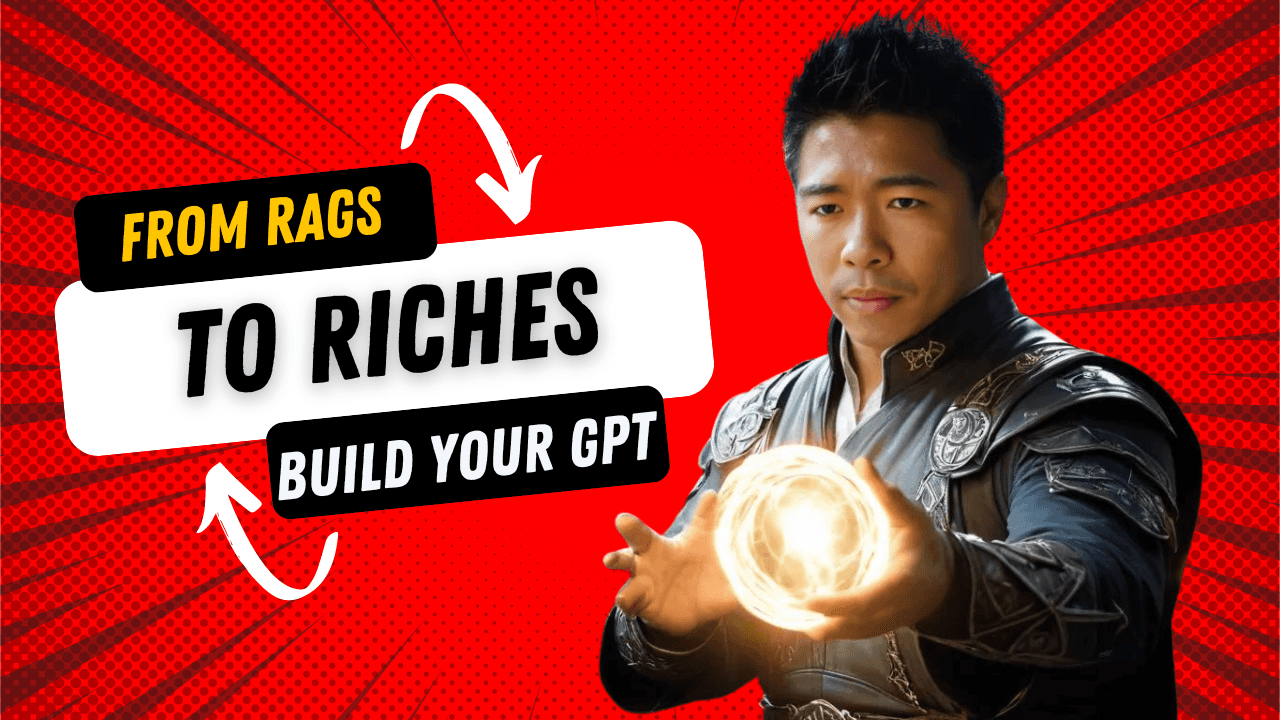From Rags to Riches: Building GPTs Without Code
The ability to create and customize AI-driven tools is becoming increasingly accessible to professionals across various industries.
One such innovation is the creation of GPTs (Generative Pre-trained Transformers) without the need for extensive coding knowledge. This article will delve into the process of building GPTs using a custom knowledge base, an approach that democratizes AI development and makes it accessible to a broader audience.
The Potential of GPTs in a Non-Technical Environment
The concept of GPTs has revolutionized how businesses and professionals approach automation and artificial intelligence. Traditionally, creating AI models required a deep understanding of programming languages and machine learning algorithms. However, the "Rags to Riches" workshop highlights a paradigm shift, showing that with the right tools and knowledge base, anyone can build a GPT tailored to their specific needs, regardless of their technical background. For instance, a contracts manager in a professional services firm might wonder if AI chatbots are relevant in their non-e-commerce environment. The answer is a resounding yes. GPTs can be customized to suit any use case, from managing contracts to streamlining team communications. The flexibility of these models allows them to be molded to fit the unique demands of any business, making them invaluable assets across various industries.
Harnessing the Power of a Custom Knowledge Base
A key element in building GPTs without code is the use of a custom knowledge base. This is essentially a repository of information, such as documents, guidelines, blogs, interviews, or even books authored by the user. By feeding this content into the GPT, the AI becomes finely tuned to the specific requirements and style of the user.
For example, if a government agency needs to draft a Request for Proposal (RFP), the relevant guidelines and knowledge can be integrated into the GPT, enabling it to generate accurate and contextually appropriate drafts.
This approach is not limited to RFPs or government agencies. It can be applied to a wide range of scenarios. Consider a freelance data analyst who needs to tackle various challenges in their work. By creating a custom GPT that incorporates the analyst's past work, best practices, and industry knowledge, the AI can assist in generating detailed and nuanced analyses, proposals, or reports, thus saving time and enhancing productivity.
Real-World Applications: LinkedIn Collaborative Articles
An intriguing application of GPTs, as demonstrated in the workshop, is their use in generating content for LinkedIn Collaborative Articles (LCAs). LCAs are a popular way for professionals to share their expertise and insights with a broader audience on LinkedIn. By integrating a GPT into this process, a user can quickly draft articles that align with their voice and knowledge, significantly reducing the time and effort required to produce high-quality content.
For example, if a user is building a digital course and wants to establish themselves as a skills expert, they can feed relevant course materials and expertise into their GPT. The AI can then generate draft content for LinkedIn articles, which the user can refine and publish. This not only enhances the user's online presence but also positions them as a thought leader in their field.
Customization: The Key to Effective GPTs
The effectiveness of a GPT hinges on its ability to be customized. During the workshop, participants learned how to refine prompts and tailor the output to meet specific requirements.
For instance, when generating content for LinkedIn, a user might want the text to be concise, fitting within a 750-character limit. By instructing the GPT to condense its writing, the AI can produce content that meets these precise specifications, demonstrating the importance of prompt refinement in creating usable outputs.
Customization also extends to the content generated by the GPT. Users can instruct the AI to focus on specific aspects of a topic, such as building a portfolio or enhancing soft skills. This level of control ensures that the GPT's output is not only relevant but also aligns with the user's objectives, whether they are writing articles, drafting proposals, or creating training materials.
Building and Training Your Own GPT: A Step-by-Step Guide
Building your own GPT without code involves several key steps, each of which was covered in detail during the "Rags to Riches" workshop. Here is a step-by-step guide based on the insights shared:
- Define Your Use Case: Begin by identifying the specific task or set of tasks you want your GPT to perform. This could be anything from drafting contracts to generating blog posts.
The Future of AI in Professional Services
The ability to build GPTs without coding knowledge is a powerful advancement for professionals in various fields. It empowers individuals to harness AI's potential, creating tools that align with their business objectives. As demonstrated in the workshop, this approach is not limited to a single industry or use case. Whether you are a contracts manager, a data analyst, or a content creator, the possibilities are extensive.


